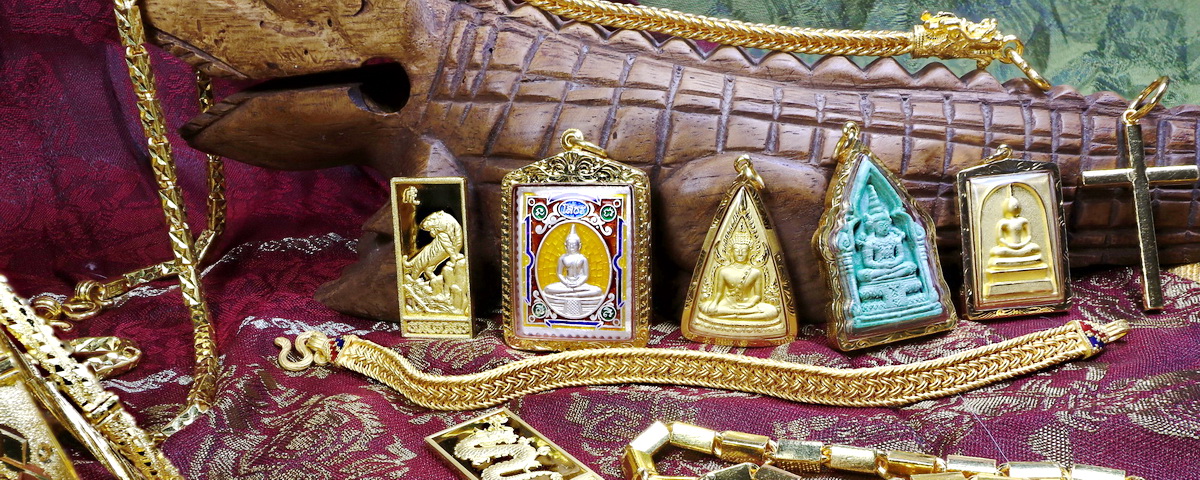Famous Thai amulets [ edit ] 524
by Admin
Posted on 19-10-2023 02:45 PM

The very first thai buddha amulets were created with the intention to grant their wearers invulnerability. They were made from medicinal plants like wan – a group of flora believed to provide safety, and had depicted lord buddha, according to spurlock museum.
 They were later made with stronger materials like clay and limestone. When the 19th century hit, thailand’s buddhism community incorporated more hindu-brahman beliefs as well as art styles. From then on, sacred diagrams and symbols were placed onto the amulets, in addition to images of lord buddha. Image credit: เบญจภาคี-มรดกไทย
whilst we can still
find
some of these amulets created all those centuries ago, it’s rather difficult and expensive.
They were later made with stronger materials like clay and limestone. When the 19th century hit, thailand’s buddhism community incorporated more hindu-brahman beliefs as well as art styles. From then on, sacred diagrams and symbols were placed onto the amulets, in addition to images of lord buddha. Image credit: เบญจภาคี-มรดกไทย
whilst we can still
find
some of these amulets created all those centuries ago, it’s rather difficult and expensive.
Thai buddhist amulets are something of an obsession in this buddhist land. Buddhist amulets are part of thai culture and you see them everywhere. Amulets, on the other hand, ward off evil and repel bad luck. The word itself comes from the latin amuletum, ‘to protect a person from trouble”. They can be gems, paintings, rings or pendants, animals, and even words. (talismans, a related form of what we call ‘charms’ bring luck). In most treasured form, the buddha amulet, is known as plah keang. During a deadly drought a thai monk went to the disaster area during a deadly drought to rescue a famous statue of gautama that was in danger of being abandoned.
Most of the vendors at the thai amulets market want to keep things low-key – they’re not keen about attracting attention from the taxman. Even so, they’re mostly quite open with answering your questions or giving opinions on the amulets on display as well as the images of famous thai monks for sale. If you’re a collector, amulets aren’t something you’d buy in a rush. You need time to look and learn about each piece. Amulets can be made from a variety of materials including gypsum, clay, various metals and even silver or gold. There are no standard market prices – prices depend on negotiations between the buyer and seller.
A thai buddha amulet (thai: พระเครื่อง), often referred to academically as votive tablet, is a kind of thai buddhist blessed item. It is used to raise funds to help the temple producing the amulets. Worshippers can obtain an amulet or thai buddhist monk blessing by simply donating money or offering oil to the temple. After the donation, the monk will give them amulet as a gift. With the change of time, the amulets no longer simply are considered a "gift" but a tool to help enhance luck in different aspects of life. People use amulets to improve their marriage, wealth, health, love and relationships.
Prayer [ edit ]
Omamori ( 御守 / お守り ) are japanese amulets commonly sold at shinto shrines and buddhist temples, dedicated to particular shinto kami as well as buddhist figures, and are said to provide various forms of luck and protection. Origin and usage[ edit ]
the word mamori ( 守り ) means 'protection', with omamori being the sonkeigo (honorific) form of the word. Originally made from paper or wood, modern amulets are small items usually kept inside a brocade bag and may contain a prayer, religious inscription of invocation. Omamori are available at both shinto shrines and buddhist temples with few exceptions and are available for sale, regardless of one's religious affiliation.

See also [ edit ]
(66) k900 phra pidta phang phra karn thai buddha amulet pendant talisman charm magic first edition year 1987 brass material gold color sale price thb 1,135. 98 thb 1,135. 98 thb 1,514. 77 original price thb 1,514. 77 (25% off) free shipping.
The workshop creating a tibetan amulet for healing and protection was especially developed by carmen for the rubin museum of art (nyc) and she offers them now and then at different places as well. In this workshop you will learn all about the use of amulets in ancient tibet, and after that you will create one for yourself, according to tradition. This amulet for long life, healing and protection will be made according to the tibetan buddhist tradition, with a personal touch, making it a very unique and individual item. We will also work with the mantras and meditations that are used. Buddhist amulet making workshops are offered irregularly.